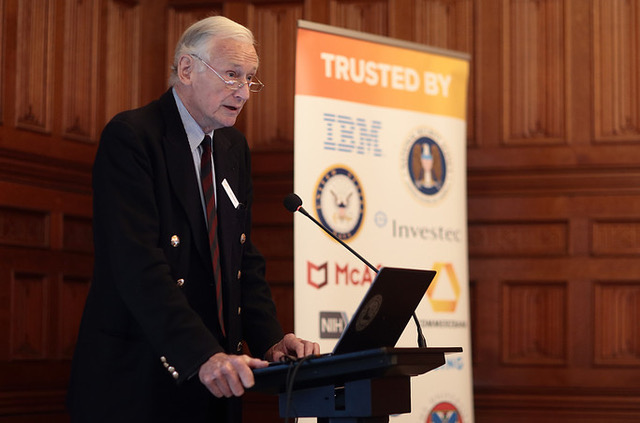Bridgeworks CEO, David Trossell features in and gets the cover of TaaS Magazine to discuss the importance of WAN acceleration in the industry of autonomous vehicles and planning for the future of data management in the automotive industry.

September 1, 2021
Self-driving cars still have a long way to go before they become commonplace on public roads around the world. However, in the meantime all kinds of businesses are having to adapt to using artificial intelligence. David Hughes, founder and CEO of Silver Peak writes in an Information Age article: “While self-driving cars still have some way to go, AI is already having a significant impact on the way IT runs enterprises. Businesses are making the transition from being automated to autonomous, where machine learning and AI make it possible to create a ‘self-driving’ wide area network (WAN).”
With the Oxbotica consortium predicting that Connected and Autonomous Vehicles (CAVs) will produce 1.2TB of data during a 16 hour period, and with the 70 million vehicles expected on the market by 2027, at least 74 Zettabytes of data is going to be created by CAVs every day. A bit wild, and the majority of us only use our cars for 3-4 hours a day. The connected vehicle services, including vehicle-to-everything (V2X), which include connectivity with road infrastructure, will be data hungry.
Adam Frost, writing for Traffic Technology on 2nd March 2020, says in his article ‘OpenRoaming platform to focus on CAV data challenge’: “UK-based autonomous vehicle (AV) software developer Oxbotica has partnered with American networking technology multinational Cisco Systems Inc. to demonstrate how OpenRoaming can unlock the potential of fully-connected AV fleets, enabling the seamless and secure sharing of high-volume data while on the move.”
This information derived from the vehicle sensors, between other vehicles (V2V), V2X generally, and from the sensors of each individual vehicle navigate each obstacle and pathway, maintaining lane discipline and distance between each vehicle. As well as imaging from onboard cameras, and the corresponding artificial intelligence (AI) responses, enables the vehicles to safely operate in connected, semi-autonomous, and will eventually permit, fully autonomous mode.
The British Standards Institute (BSI) writes: “The data that CAVs capture, store and share will play a critical role in the testing and deployment of Connected and Autonomous Vehicles and CAV services, thereby optimising vehicle and network performance, user experience and improving safety. However, there are concerns regarding the reliability, availability and security of the data that may pose a barrier to both CAV development and public acceptance.”
Vehicle data and connectivity
Vehicle data and connectivity are incredibly invaluable to the vehicle manufacturers, allowing them to also improve the construction of these vehicles, and by using big data analysis they can create new services to aid the vehicles, their drivers and passengers. Without AI, autonomous vehicles can’t and won’t exist. That said, the current use of AI in the IT sector is mostly around the removal of humans in the call handling functions. There are a few other uses, but call robots and chatbots seem to be one the key usages at the moment. The prospect of developing CAVs nevertheless offers greater challenges, and wider opportunities.
So, how can players within the CAV ecosystem – including OEMs, the vehicle manufacturers – move this vast amount of data? If we think 4G and 5G are going to provide this conduit back to the manufacturers as well as everyone using it for videos, Facebook and gaming etc, the over-the-air transmission and backhaul bandwidth is not going to cope. This is somewhat the conclusion of the Oxbotica, which is involved with with several consortia – not just OpenRoaming but also DRIVEN. It’s an issue its partners are trying to resolve.
Wi-Fi 6 with 5G
The light on the horizon is likely to be the next generation of Wi-Fi standards. With the roll-out of more and more fibre being delivered to the premise, and Wi-Fi 6 with 5G could be the start of a solution not only to download the bulk data at convenient stopping points such a traffic light and or fuel stations. Whilst on the move data transfers can be handled by 5G.
This will include the existing goal of vehicles communicating with each other within a small geographical area – in a grid structure. So, on top of everything else, security is going to be a major factor with the connected vehicle. There will have hardened security for these vehicles, and yet it will require a system of logging on the Wi-Fi networks globally. This could be known as a ‘self-driving’ network – creating the question of whether SD-WANs adequately fit this description, and serve this purpose.
SD-WANs: Self-driving?
Well, there is some movement on the SD-WAN front to drop AI into the products to help with managing traffic flow, but I don’t think they are self-driving at the moment. Smart SD-WANs should be able to learn from the data flows in terms of destination flow patterns, time of transfers, smart capacity management, and without manually setting policies. So, I would not use SD-WANs for applications such as Transport-as-a-Service (TaaS). SD-WANs are not relevant to CAVs be they are a straight internet play.
WAN Acceleration offers better prospects for enabling a self-driving network. It encompasses AI to maintain the optimum performance at all times. It does so by understanding the way data flows across the network, which is usually a wide area network (WAN). It looks for solutions to improve the data flow in a way a racing driver seeks to improve his speed by understanding the feedback from the car, adjusting the inputs to achieve the maximum output.
One solution that can do this is PORTrockIT, which employs a combination of AI, machine learning and data parallelisation to mitigate the effects of latency and packet loss, while increasing the use of the available bandwidth. SD-WANs can be overlayed with it to improve their performance. With WAN Acceleration, vast amounts of data of all types can be securely moved over WANs, across the globe.
While much connected and autonomous vehicle data will often be over-the-air and therefore be transmitted via mobile connectivity, large volumes of data will need to backed up, retrieved, sent and received via other WAN links – including land-based WAN connectivity. SD-WANs can help to resolve network performance issues to a certain extent, but they are reinforced when combined with WAN Acceleration. So, perhaps together, they could play a role in creating a self-driving WAN future for some aspects of the CAV future.




